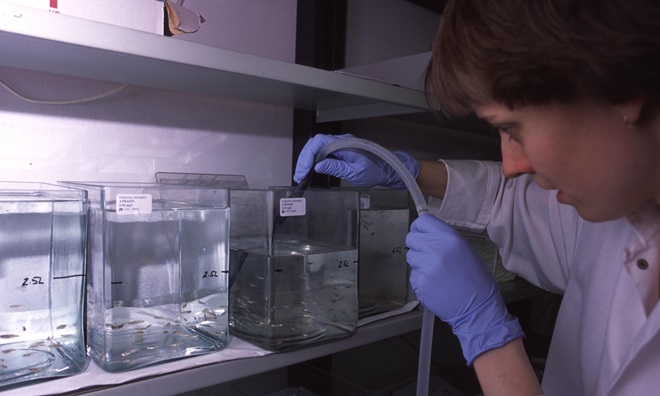Danish test method for endocrine disruptors adopted by OECD
DHI has participated from the very beginning in the development of a validated and accepted new guideline from the Organisation for Economic Cooperation and Development (OECD).
The new method measures the sexual development of zebrafish and is the first OECD test method targeted at identifying chemical substances which affect fish in their environment.
Effects determined by sexual development
In the test zebrafish are exposed to various chemical substances for the duration of 60 days. After 60 days the sexual development of the fish is determined. Thus it is possible to decide if a substance has any endocrine disrupting effects. The method is an important step to gain better control of the use of chemicals surrounding us in our daily life, for instance the impact from chemicals used in packaging, cosmetics, and other consumer products.
The zebrafish test is also of great importance to the chemicals industry and the pharmaceutical industry, which need to substantiate that their products are not harmful to humans or the environment.
10 years of innovation The method, officially named
OECD Test Guideline No 234 (TG 234), is the result of 10 years’ work lead by researches from the University of Copenhagen and the University of Southern Denmark, involving laboratories in Germany, Sweden, England, Japan as well as DHI, Denmark.
The project has been financed by the Danish EPA and the Nordic Council of Ministers, which has appointed a working group to develop test methods for chemicals with special emphasis on endocrine disruptors.
